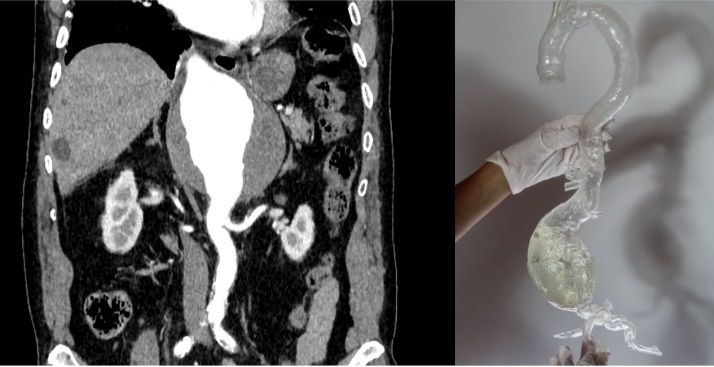
Axial3D software
Axial3d - Solution for Cardiac Surgery
Transforming planning, diagnosis and treatment for cardiac surgery, Dramatically improve patient care with our proven patient-specific solutions. Cardiac surgeons typically rely on a patient’s CT, MRI or X-ray to aid in diagnosis and pre-operative planning. These commonly used 2D images make conceptualizing complex three-dimensional anatomical structures a difficult task for even the most experienced surgeon. 2D images can complicate pre-operative planning, leading to many complex surgeries being misdiagnosed or misplanned and millions of unnecessary hours spent in surgery. These images can be hard for patients to decipher too, and surgeons will often have to resort to drawings and other tools to help the patient understand their diagnosis and to gain their consent to proceed with a planned surgery.
Axial3d - Solution for Craniomaxillofacial Surgery
Transforming planning, diagnosis and treatment for craniomaxillofacial surgery. Dramatically improve patient care with our proven patient-specific solutions. Craniomaxillofacial surgeons typically rely on a patient’s CT, MRI or X-ray scan to aid in diagnosis and pre-operative planning
These commonly used 2D images make conceptualizing complex three-dimensional anatomical structures a difficult task for even the most experienced surgeon. 2D images can complicate pre-operative planning, leading to many complex surgeries being misdiagnosed or misplanned and millions of unnecessary hours spent in surgery. These images can be hard for patients to decipher too, and surgeons will often have to resort to drawings and other tools to help the patient understand their diagnosis and to gain their consent to proceed with a planned surgery.
Axial3d - Solution for Interventionalists
Transforming planning, diagnosis and treatment for Interventionalists, Dramatically improve patient care with our proven patient-specific solutions. Interventionalists typically rely on a patient’s CT, MRI or X-ray to aid in diagnosis and pre-operative planning. These commonly used 2D images make conceptualizing complex three-dimensional anatomical structures a difficult task for even the most experienced surgeon. 2D images can complicate pre-operative planning, leading to many complex surgeries being misdiagnosed or misplanned and millions of unnecessary hours spent in surgery. These images can be hard for patients to decipher too, and surgeons will often have to resort to drawings and other tools to help the patient understand their diagnosis and to gain their consent to proceed with a planned surgery.
Axial3d - Solution for Orthopedic Surgery
Transforming planning, diagnosis and treatment for orthopedic surgery, Dramatically improve patient care with our proven patient-specific solutions. Orthopedic surgeons typically rely on a patient’s CT, MRI or X-ray scan to aid in diagnosis and pre-operative planning
These commonly used 2D images make conceptualizing complex three-dimensional anatomical structures a difficult task for even the most experienced surgeon. 2D images can complicate pre-operative planning, leading to many complex surgeries being misdiagnosed or misplanned and millions of unnecessary hours spent in surgery. These images can be hard for patients to decipher too, and surgeons will often have to resort to drawings and other tools to help the patient understand their diagnosis and to gain their consent to proceed with a planned surgery.
Axial3d - Transforming Treatment Solution for Craniomaxillofacial Neurosurgery
Transforming planning, diagnosis and treatment for neurosurgery, Dramatically improve patient care with our proven patient-specific solutions. Neurosurgeons typically rely on a patient’s CT, MRI or X-ray to aid in diagnosis and pre-operative planning. These commonly used 2D images make conceptualizing complex three-dimensional anatomical structures a difficult task for even the most experienced surgeon. 2D images can complicate pre-operative planning, leading to many complex surgeries being misdiagnosed or misplanned and millions of unnecessary hours spent in surgery. These images can be hard for patients to decipher too, and surgeons will often have to resort to drawings and other tools to help the patient understand their diagnosis and to gain their consent to proceed with a planned surgery.





